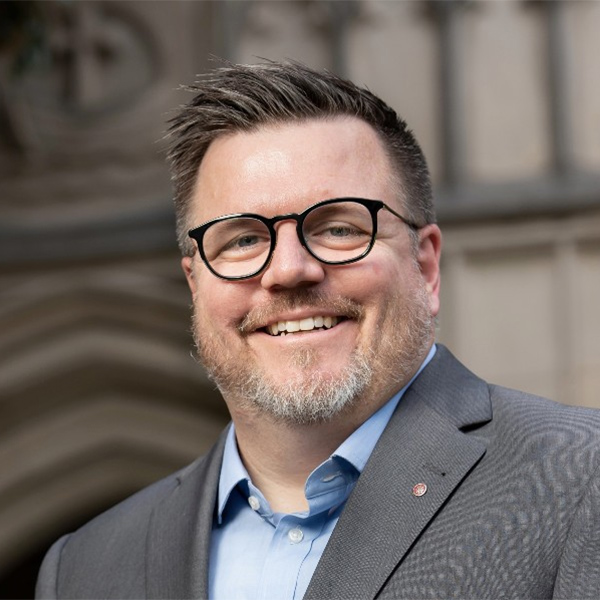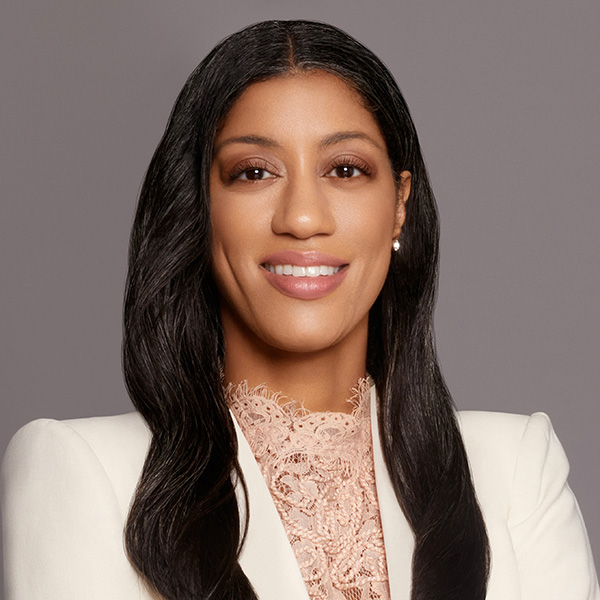Despite helping 358,000 people a year, the Greater Minneapolis Council of Churches doesn’t get many thank-you notes. It’s not that people don’t appreciate having volunteers paint their homes, shovel their snow and plant their gardens. And they’re not being rude by refusing to acknowledge assistance that includes everything from providing food to helping people stay out of jail.
It’s just that the majority of the people who are helped don’t have a clue where the help is coming from.
“At least two-thirds of them have never heard of us,” said the Rev. Gary Reierson, the council’s president. “A lot of the volunteers don’t even know they’re working for us.”
With an $8 million budget, 700 member congregations and 25,000 volunteers, the Greater Minneapolis Council of Churches (GMCC) is not only the largest local council of churches in North America, it’s also bigger than all state councils.
The council’s mission is based on the Christian admonition to help the less fortunate. Beyond that, church volunteers are asked to check their individual theological beliefs at the door, so to speak. The council is proud of the breadth of its membership base, which ranges ideologically from conservative to liberal and denominationally from Baptist to Quaker.
It might seem odd that such a massive operation remains virtually unknown, even in its own backyard. But Reierson isn’t complaining about that. On the contrary, he’s convinced that it’s the key to the council’s success.
“Taking credit is not what this is all about,” he said. “There are some organizations where getting credit is more important than what they do. That’s not the way we work. We want our partners to get the credit.”
He divides the council’s process into two parts: Make sure the volunteers have the resources -- including training and materials -- to succeed. And then make sure their success is noticed by the public.
In practical terms, it works like this: When a church decides to take part in the council’s Paint-A-Thon program, for example, the council sends a professional painter to teach its volunteers how to prep, prime and paint, and then the council provides all the supplies they’ll need, from paint to safety masks.
On the day of the Paint-A-Thon, volunteers come decked out in T-shirts with the church’s name on it. As a result, the homeowners send their effusive thank-you notes to the church.
It’s a win-win-win situation, Reierson maintains. The homeowners are happy because they’ve gotten much-needed help. The volunteers are happy because they’ve created good will for their church. And GMCC is happy because everybody else is happy.
“If you have support in terms of training and supplies and you have good will, it will always translate to a great result,” Reierson said. Last year 2,550 Paint-A-Thon volunteers worked a combined 22,500 hours and used 1,534 gallons of paint and primer on 132 homes, bringing the total number of houses painted since the program’s inception in 1984 to more than 6,000.
The Greater Minneapolis Council of Churches’ approach to leadership:
- Let others have the spotlight. All that most volunteers want is for their efforts to be appreciated.
- Focus on building partnerships. A team can accomplish more than a collection of individuals.
- Foster deep collaboration. Truly collaborative partnerships build mutual trust and respect and discourage turf wars.
- Embrace change. You might be a nonprofit, but you still need to have an entrepreneurial spirit.
- Get the people on the job who will do the best job. And don’t be afraid to remove those who are wrong for the job.
In explaining the council’s low-profile philosophy, Reierson turns to breakfast cereal. In terms of this analogy, he prefers General Mills to Kellogg’s.
“Every cereal Kellogg’s makes has ‘Kellogg’s’ in its name, like Kellogg’s Corn Flakes or Kellogg’s Rice Krispies,” he said. “General Mills makes Wheaties and Cheerios. But it’s not General Mills Wheaties. It’s just Wheaties, just Cheerios. Yes, the box has the company’s logo on it -- the big G -- but the company’s name is not part of the cereal’s name.
“That’s the way we are. We don’t need the words ‘Greater Minneapolis Council of Churches’ in large letters on everything we do. We have our logo there, and if people notice it, fine. And if they don’t, that’s fine, too.”
Change is good
When Reierson -- the former pastor of Plymouth Congregational Church in Minneapolis -- was named president of the council in 1989, its budget was $1.2 million and it oversaw a dozen programs. Its current size is 6.6 times that. Ann Merrill, past-chair of the council’s board of directors, credits the growth to Reierson’s aggressive search for new opportunities.
“I like change,” Reierson said. “I realize that change makes some people nervous. But I believe that even though we’re nonprofit, we need to think like entrepreneurs.”
“This entrepreneurial spirit is a core strength for Gary,” Merrill said. “In my experience on several nonprofit boards over the years, I have seen many leadership styles and skill sets. What sets Gary apart is that he is not only able to make sure the mission is fulfilled each and every day in the trenches, but that he also is able to keep his eyes on the future. He and his team are always evaluating community need and then trying to figure out a way to address the future.”
That’s the sort of thinking that led to the Community Justice Project. It’s run by the Rev. Hillary Freeman, a retired Minneapolis police employee who is also a United Church of Christ minister. In what she calls “a perfect partnership of God and government,” the program draws half its support from the police department, the other half from GMCC, and spends all her time trying to keep people who have recently been released from jail from ending up back there.
She works with a team of volunteer mentors -- some of them ex-cons themselves, but most not -- who form one-on-one partnerships with offenders as their release dates approach. The program’s success rate is nothing short of astounding: on average, 52 percent of Minnesota inmates are returned to prison within a year of their release, while the rate for the project’s participants is 13 percent.
Reierson attributes the success to a “unique combination of accountability and grace,” rooted in his organization’s conviction that all human beings have dignity because they are created in the image of God.
Determining which new ideas to pursue depends on their effectiveness, not the potential to find sponsors, Reierson said.
“The important thing is whether it fits our mission,” he said. “If you come up with ideas and an effective way of implementing them, my job is to figure out how to find the resources.”
A new program this summer involved gardeners who used donated plants to spruce up senior citizens’ homes. Julie Casey heard about the program from her suburban church and not only signed up, but asked for the biggest challenge they had. With the help of her husband and two teenage children, she spent the summer completely redoing the yard of a Minneapolis resident named Mary, who had not been able to work on her own garden since suffering a back injury 19 years ago.
“At the end of a stressful day, I like to sit in my flower garden and contemplate,” Casey said. “Now Mary can do that.” She paused before adding with a laugh: “Plus, I like to dig in the dirt.”
His philosophy of crediting his partners is a boon in fundraising, too, said Tracy Elftmann, the council’s vice president for advancement. Corporate and foundation donors also appreciate that when GMCC solicits funds for a project, all of the money goes to that project, with the council absorbing most of the administrative costs.
Building teams to help people in need
GMCC has 33 major programs, several of which include multiple subprograms. They range in size from immense -- Minnesota FoodShare provides more than half of all the food distributed by food shelves across the entire state -- to intimate, including the one-on-one counseling provided by the Community Justice Project.
All the programs have one thing in common: they focus on building teams to help people who are in need.
“When you work together, 1 plus 1 can equal 3,” Reierson said. “We have much greater impact and much more leverage when we work together.”
One of his favorite sayings, gleaned from Jim Collins’ book ‘Good to Great and the Social Sectors,’ is about “getting the right people on the bus.”
“Lots of people have good ideas -- even brilliant ideas -- but you need people who know how to bring those ideas to fruition,” he said. “You have to get the right people in the right places by recognizing who has the capacity to pull something off.”
Unfortunately, he said, sometimes this also involves getting the wrong people off the bus.
“There’s this notion in the nonprofit culture that you’re not supposed to turn anyone away,” he said. “But if people aren’t up to it, then the job isn’t going to get done right. I certainly think that you need to give these people a chance to turn things around, but ultimately, the program is more important than an individual person.”
Turf wars are another thing than can derail collaborations. Creating truly collaborative partnerships is one way to avoid them. For example, GMCC has a partnership with the Division of Indian Work -- Minneapolis has the third-largest concentration of urban Native Americans in the country -- that is so successful that they jointly raised funds for the office building they now share.
The origins of the Division of Indian Work were the large numbers of people who were moving here from reservations in the 1950s.
“They had no houses, no jobs; there was no Welcome Wagon to greet them,” Reierson said. “Minneapolis church leaders helped organize a response to help. … I don’t know of anything like it in any other city.”
The Native American community and the faith community have created 20 programs to empower Minneapolis’ Indians. One of the keys to the collaboration’s success is mutual respect between the two agencies, he said.
“We don’t interfere with each other,” he said. “If one of us wants to do something, the other has veto power over it. That way we don’t go off and create something separately that the other one doesn’t want. We fully respect each other’s financing, personnel and programming.”
In working with partners, Reierson said that staying true to the organization’s theological convictions and mission of “uniting people of faith to serve people in need” both empowers the many and diverse partners to work together and has become a key to success over the years.
“We assiduously avoid the church-dividing issues and the culture wars, and there is a remarkable unanimity among a diverse range of Christian congregations around the gospel call to serve “the least of these” among us,” he said. “In partnering with those of other religious faiths, I find all have comparable beliefs about service to those most in need.”
Engaging the community
“I think that a large part of it is embedded in the community,” he said. “The Midwest is well-churched. Plus, there’s a spirit of volunteerism and bipartisanship that doesn’t exist elsewhere. I’m not sure that we could do this on the East or West Coast. The culture here makes it easier.”
Indeed, the area has a reputation for supporting religious movements and leaders, said the Rev. John Mayer, executive director of City Vision, a Minneapolis organization that tracks religious demographics.
The president of the National Council of Churches, the Rev. Peg Chemberlin, is from Minnesota, as is the president of the National Association of Evangelicals, the Rev. Leith Anderson. The state is also home to the largest Hindu temple in North America and the biggest Cambodian temple in the United States.
As for volunteering, a national study conducted by the federal Corporation for National and Community Service reported in June that residents of the Twin Cities volunteered more of their time to churches, charities and schools than the people of any other metropolitan area in the country.
But that still leaves the chicken-and-egg question: Is GMCC so effective because it has such a large pool of volunteers from which to draw, or is the council responsible for creating those high numbers? Reierson’s supporters argue that it’s the latter.
“He is a strong networker in the best sense of the word: connecting people together so that good work can get done in our community,” Merrill said.













